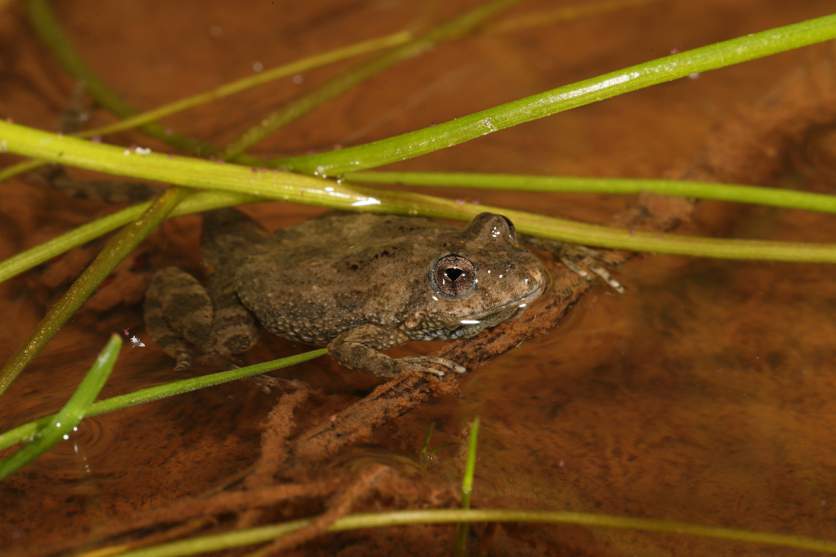The Frog of the Month for November is the Sloane’s Froglet (Crinia sloanei) as part of the Goulburn Broken Catchment Management Authority’s 2022 Year of the Frog community awareness campaign.
The Frog of the Month for November is the Sloane’s Froglet (Crinia sloanei) as part of the Goulburn Broken Catchment Management Authority’s 2022 Year of the Frog community awareness campaign.
The Sloane’s Froglet is found in the Goulburn Broken Catchment’s grey box grassy woodlands which are a focus of the GB CMA Linking Landscapes and Communities Project that works with landowners, communities, and Traditional Owners to improve this critical habitat. This project is supported by the Goulburn Broken CMA through funding from the Australian Government’s National Landcare Program.
Goulburn Broken CMA Project Officer, Janice Mentiplay-Smith, said that at only around two centimetres, the Sloane’s Froglet was one of the Goulburn Broken catchment’s smallest amphibians.
“Unfortunately, the Sloane’s Froglet holds the unenviable position of being listed as endangered in Victoria and endangered under the Environment Protection and Biodiversity Conservation Act 1999 (EPBC Act), which is the Australian Government's central piece of environmental legislation,” Ms Mentiplay-Smith said.
“The EPBC Act essentially provides a legal framework to protect and manage nationally and internationally important flora, fauna, ecological communities and heritage places.
“Currently in Australia, there are more than 1700 ecological communities and species known to be threatened and at risk of extinction, including the little Sloane’s Froglet.”
Ms Mentiplay-Smith said known Sloane’s Froglet populations were small, scattered throughout Victoria and NSW, and in decline. In the Goulburn Broken catchment they are associated with the endangered Grey Box Grassy Woodlands and Derived Native Grasslands.
“It’s easy to see how so many native animals and birds become caught in a cycle of decline; if the habitat they depend upon becomes endangered, then it is only a matter of time before they too join the ‘endangered club’,” she said.
“The Soane’s Froglet typically occupies areas of grassland and woodland that are periodically inundated. Gilgais, which are shallow depressions in clay soils that temporarily collect water, are features of Grey Box Grassy Woodland ecosystems and vital to Sloane’s Froglet survival.”
As well as the loss, decline and degradation of gilgais and its associated habitat, other threats to the Sloane’s Froglet include invasive species such as foxes and cats, disease such as the devastating Chytrid Fungus, herbicides and pesticides in the environment, altered fire regimes that damage or destroy habitat, changes in water use and water flows, and the broader effects of climate change.
“The recent flood events may not be particularly helpful to the Sloane’s Froglet, as it requires temporary, intermittent water, not continuous inundation. As it is a terrestrial frog - not a climber or a burrower - during times of flood it will search for high ground or floating debris and vegetation to cling on to, which places it at risk of predation.
“There’s not a great deal of ‘good news’ when it comes to the Sloane’s Froglet, but if we can work towards improving the environment by beginning in our own back yards and properties - reducing or eliminating chemical use, controlling cats and other predators, being mindful of biosecurity so we don’t transfer disease and retaining fallen timber as habitat - then the little Sloane’s Froglet and other frogs may have a fighting chance.”
Have you heard of Frogs Victoria? Visit https://www.frogsvic.org/newsletter to read and subscribe to the Frogs Victoria official newsletter.

Sloane’s Froglet. Photo Chris Tzaros